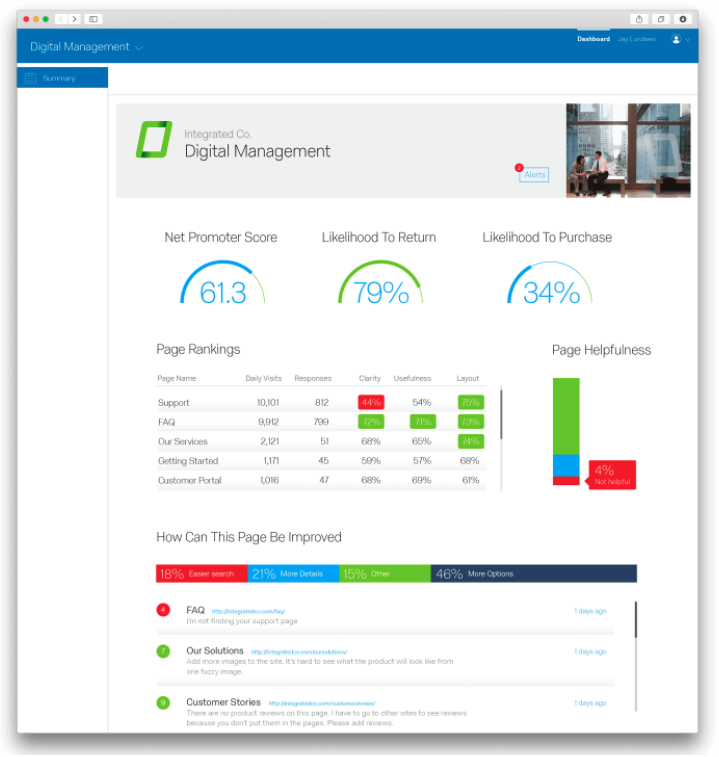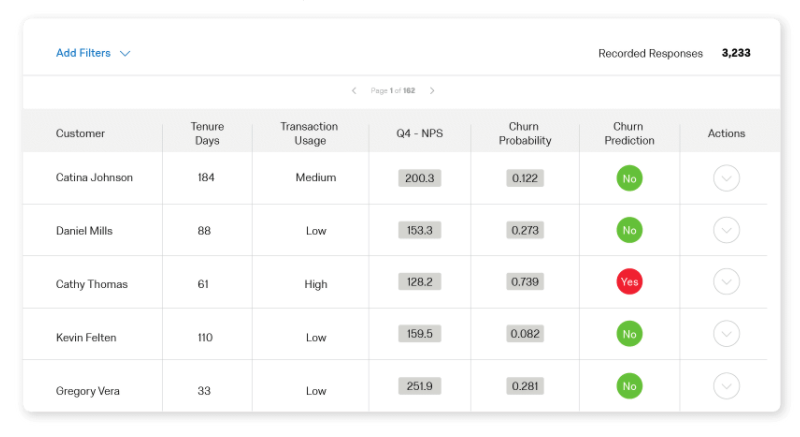Designing your customer experience using digital analytics can greatly enhance how your customers feel about your brand. Learn best practices for digital analytics and customer experience (CX) with our useful guide.
What is digital customer experience?
In the past, customer experience just encompassed how a customer felt about their interactions with brick-and-mortar stores. No more, no less.
But in our current digital landscape, the customer journey encompasses multiple touchpoints and channels, often leaving behind a complex digital footprint that’s difficult to turn into useful insights.
Today understanding a customer’s digital footprint—and what happens at every touchpoint—is crucial. By capturing and consolidating this information, businesses can improve the experiences they offer, identify new opportunities and provide what their digital audiences need for a successful online customer journey.
And all of this requires digital customer experience analytics.
Digital customer experience analytics can bring together disparate customer data and transform it into actionable insights. You can use it to understand your customers’ needs and, when set up properly, it can help you predict future behavior, streamline your output, and increase profits.
It pays to dive deep into your customer’s behavior and requirements; McKinsey found that “intensive” users of customer analytics are 23 times more likely to outperform competitors in customer acquisition, and nine times as likely to stay loyal customers.
Also, as 67% of CEOs and other executives believe that customers will become more demanding, keeping up with customer experience requirements is more pressing than ever.
But what exactly are digital experience analytics, and how do you measure the data you collect? Read on for best practices, case studies, and useful tips for designing your customer experience using digital analytics.
What is digital customer experience analytics?
Defining digital experience analytics
Digital experience analytics (or customer experience analytics) is a solution that helps brands to collect data at every touchpoint to analyze and improve the customer experience across digital channels, such as websites and apps.
The data collected can include website data, user feedback, site experience research, post-transaction survey data, and more.
With the data captured by digital experience analytics, your digital teams are equipped to resolve issues, retain high-value customers, extend the customer lifecycle, and improve marketing communications.
Also, using experience analytics in conjunction with an experience management platform can help you not only gather useful data but convert it into insights and trends that can inform your future actions.
Related: Learn how Digital Experience Intelligence can supercharge your technology stack.
Why is digital experience analytics important?
Understanding engagement across channels is key to measuring and improving the digital customer experience. Your customers will be more invested in your brand, more likely to convert, and more loyal to your brand as a result.
Just one bad interaction can lead your customers to walk away—so tailoring their digital experience with your brand is vital for retaining your audience.
A data-led approach is not just better for your customers—it’s financially more profitable for your brand. Data-driven organizations are more financially successful than their competitors; McKinsey found that “above average” profitability for data-aware companies was 19 times higher than businesses without a data-driven focus.
So, where do you start?
How do you measure digital customer experience and the customer journey?
Before you start
Before creating the ultimate online customer experience, you�’ll need to know your target audience—your specific customer segment.
Dividing customers into groups based on their common characteristics can help you to build audience personas and identify trends. It also helps you to narrow down the factors that affect the metrics you choose to use to evaluate your customer experience.
Understanding your metrics
You have a range of metrics to choose from when it comes to evaluating the digital customer experience.
These can include:
CSAT (Customer Satisfaction): How satisfied are your customers with their experience
NPS (Net Promoter Score): How loyal are your customers to your brand as a result of their experience?
CES (Customer Effort Score): How hard does your customer have to work to get what they want from your brand?
Churn rate: How many customers move away from your brand over a set period?
Time to resolution: How quickly are customers’ issues resolved?
These metrics build up an expansive picture of your digital customer experience. Rather than focusing on one area—such as customer effort—these metrics used in conjunction can be strong indicators of good and bad experiences, as well as illustrate factors for retention, satisfaction, and profitability. You can then use your findings to define key performance indicators across from the customer insights you receive.
Choose your methods
Once you’ve decided on your metrics, you can choose the methods you’re going to employ to gather feedback on the digital customer experience.
Customer feedback surveys
Market research
Web analytics
Real-time tracking across websites
Heatmaps
Social media analysis
Every method will give you a different lens into customer behavior. For example, social media analysis (including listening) can help uncover how potential and current customers feel about your brand. Market research, on the other hand, can give you a comprehensive breakdown of consumer attitudes, expectations, and much more—it all depends on your line of questioning.
But by using a combination of the above to gather feedback, you can get a more comprehensive and representative view of your brand and the experience you provide.
Evaluate your data
As well as collecting data, you need to analyze it. Being able to predict your customers’ next move, rather than just reacting to user behaviors, can transform how you do business.
Your metrics also need to be assessed. Which data, when overlaid with financial information, best predicts effects on your bottom line? Placing greater focus on improving your results on the metrics that matter most will help you to reap the greatest rewards.
Take your churn rate, for example. If it’s significantly higher than your competitors’, the question is, what are they doing to retain existing customers and attract new ones?
With digital experience analytics—and a focus on the right metrics—you can uncover the what, where, how, and why of your churn rate.
Being in a position to know what’s causing your customers to churn at specific touchpoints, e.g. high prices or a lack of information, or what your competitors (through research) are doing better, will allow you to implement actionable strategies to reduce churn.
Related: Find out how to make the most of your data
Take action
Converting the data and digital experience analytics you collect into a plan for digital transformation is vital for evolving your online customer experience and finding financial benefits. Rather than customer needs being neglected or going unnoticed, your insights should inspire your teams to work cohesively to resolve customer issues, close the loop, and preemptively take steps to meet future customer needs.
Case studies of using digital experience analytics to enhance customer satisfaction
Lumen
Connectivity company Lumen’s legacy feedback platforms were collecting data, but the siloed nature of this data meant that insights were lost. With a more efficient system, NPS results were used to improve customer relations, to the point where one customer increased annual revenue by 79%.
Shoppers Drug Mart
With data channeled through Fullstory’s Digital Experience Intelligence solution, this Canadian drug store retailer was able to optimize their customer login system and therefore their customer journey. The data and analysis they collated meant that their redesign reduced the funnel dropout rate by 45%, and reduce support ticket resolution time by one week.
Choosing a digital customer analytics platform
It’s clear digital customer analytics and customer experience are deeply intertwined. Improving your skills with analytics tools can help you to revolutionize how visitors interact with your website or app and reward you with improved business outcomes.
Your digital optimization efforts can be significantly improved with a platform designed to automate data collection and insights.
Fullstory has a great guide to choosing your digital experience intelligence platform to help you make the right decision on a digital experience analytics solution.
In the guide, you can find out more about the critical factors you need to consider when evaluating a digital experience platform. You can access it for free using the link above.
See how Qualtrics can enhance your digital customer experience with our Experience Management Software.





